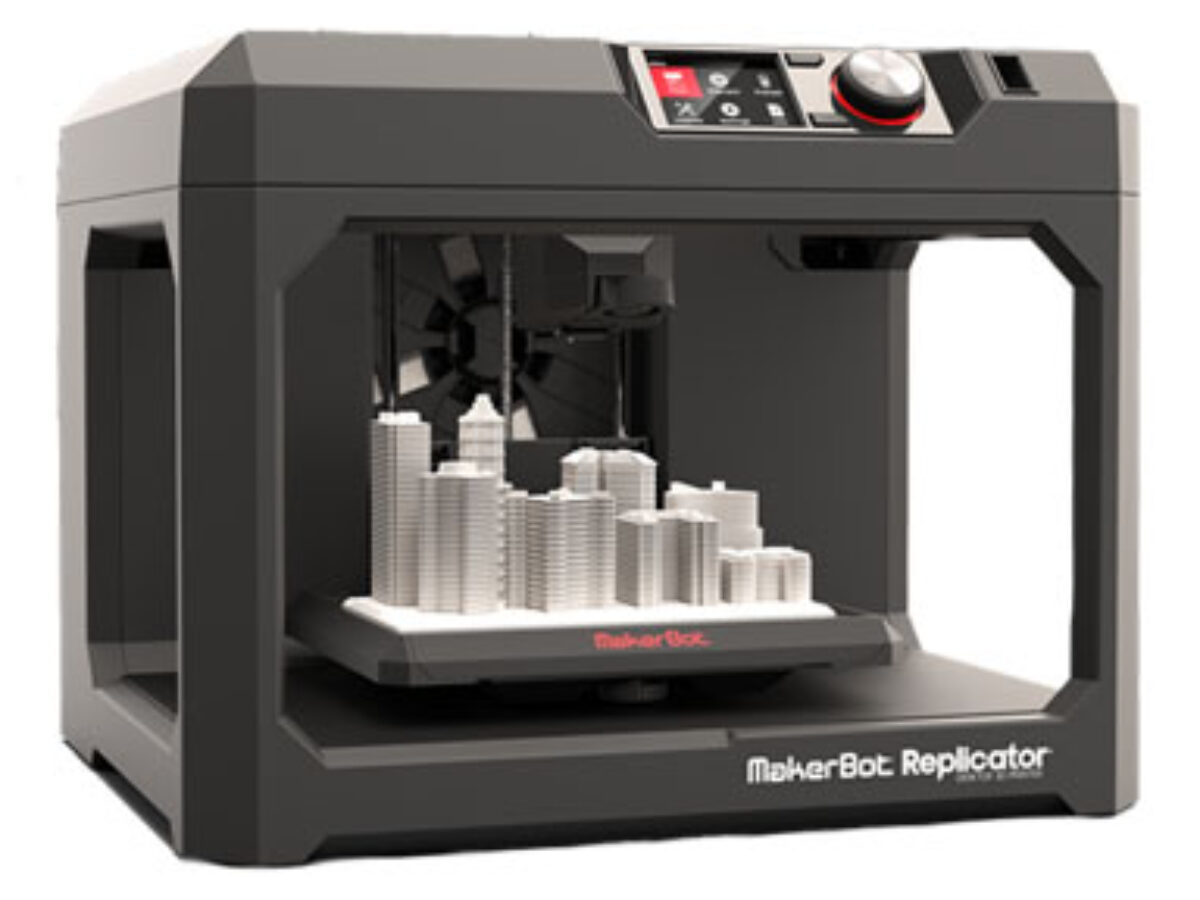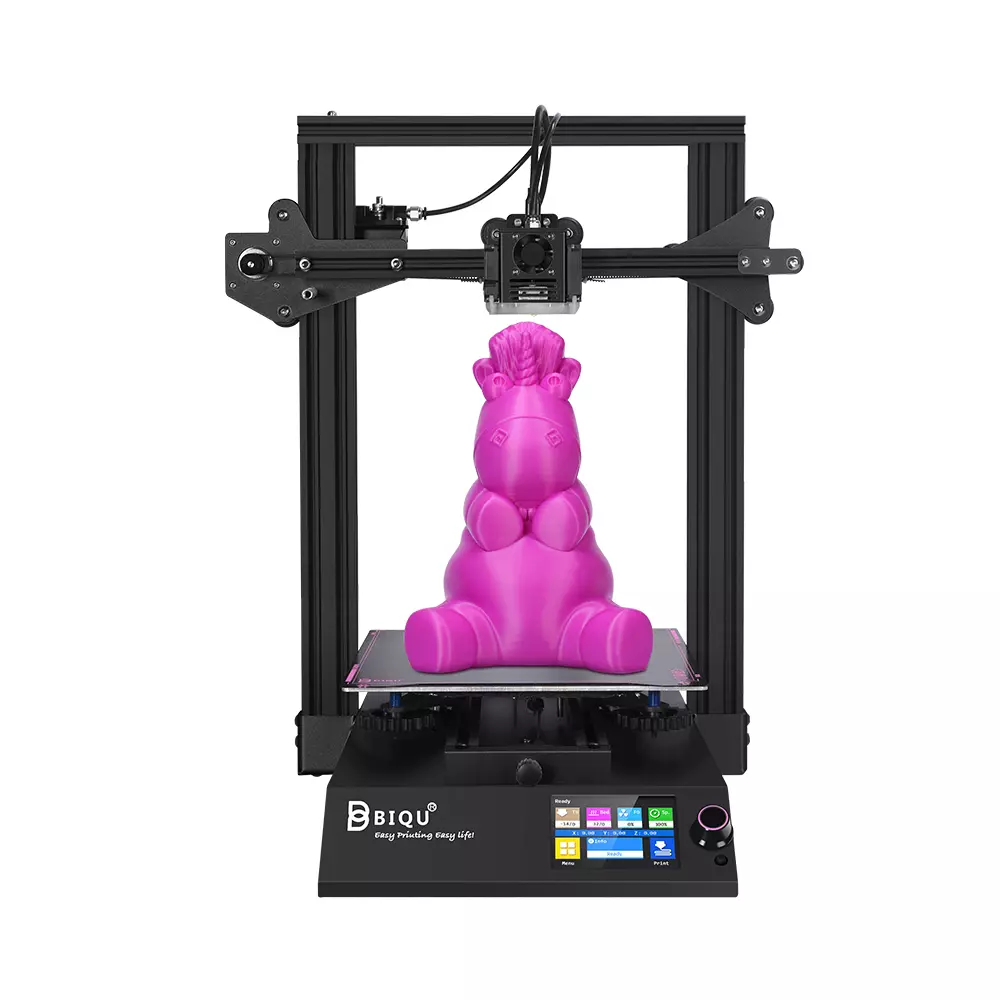Compare Replicator Plus vs BIQU B1
Comparison between the best 3D printers
Choose the best 3D printer at the best price. The cheapest 3D printers are here.
Buy a 3D printer here with 3D Fila.
 |
 |
|
| Model | Replicator Plus |
BIQU B1 |
| Printing Material | Filament | Filament |
| Buy Filament for Makerbot Replicator Plus | Buy Filament forBigTreeTech BIQU B1 | |
| Estimated price | $2099,00 | $269,00 |
| Manufacturer | Makerbot | BigTreeTech |
| Release Year | 2016 | 2020 |
| Print Volume [mm] | 165x295x195 | 235x235x270 |
| Printer Size [mm] | 410x528x441 | 412x402x492 |
| Weight [kg] | 18,3 | 8,00 |
| Power Loss Recovery | YES | YES |
| Enclosed printer | NO | NO |
| Bed Leveling | Automatic | Manual |
| Filament End Sensor | YES | YES |
| Bed type | Heated | |
| Power supply system | Bowden | Bowden |
| Standard nozzle | 0,4 | 0,4 |
| Maximum Nozzle Temperature [°C] | 230 | 250 |
| Maximum Bed Temperature [°C] | 100 | |
| Maximum printing speed [mm/s] | 150 | 100 |
| Filament holder | YES | YES |
| Camera for supervision | YES | YES |
| Recommended filaments | PLA | PLA, TPU, ABS, PETG |
| Recommended slicers | MakerBot Print Software | Cura, Simplify, Slic3r |
| Maximum Resolution [mm] | 0,1 | 0,1 |
| Processor | 32 Bits BTT SKR V 1.4 | |
| Display | Touchscreen TFT 3,5'' | |
| Power Supply | 110/220V / 240W | 24V / 360W |
| Connectivity | USB / Wi-Fi | SD / USB |
| Operating systems | Windows, Mac, Linux | Windows, Mac, Linux |
| Date of registration in the system | 2022-11-15 | 2021-04-14 |
| Release date | 2016 | 2020 |
| Extra features | The Replicator Plus printer is easy to use and has very good print quality. Its software is user-friendly and powerful, with USB, Ethernet, Wi-Fi and support for printing via pen drive. With a safe design for an open frame printer, it is relatively quiet. The Smart Extruder+ detects filament end and pauses printing automatically, in addition to notifying via apps. It has a large print volume, with a non-heated and coated print bed for easy removal of parts. It also has a webcam for remote monitoring of prints. | The BIQU B1 is an advanced 3D printer with a silent 32-bit BTT SKR V1.4 motherboard and ARM Cortex-M3 CPU, offering DIY interfaces (I2C, SPI, WiFi) and dual Z-axis. Its dual BTT B1 TFT35 V3.0 operating system allows real-time monitoring and multiple printing modes, including G-code visualization effects. It stands out for its BIQU SSS (Super Spring Steel), ensuring easy model adhesion and simplified removal, with the possibility of using it on both sides. It includes a filament sensor, automatically pausing printing in case of filament breakage. The multicolored RGB lights integrated into the hotend allow you to view the printing status even at night. Additional notes include the need for a BIQU-specific Type-C cable and extra interfaces for smart filament sensor and BL Touch. |
| Support for multiple colors and materials (AMS and CFS) | NO | NO |
Notes * |
||
| Cost-benefit | 6 / 10 | 7 / 10 |
| Hardware | 2.5 / 10 | 2 / 10 |
| Tela | . | . |
| Print volume | 3 / 10 | 3 / 10 |
| Performance | 1 / 10 | 1 / 10 |
Conclusion |
| In comparing the MakerBot Replicator Plus and the BIQU B1, it is clear that both printers cater to different user needs and budgets. The Replicator Plus, while significantly more expensive, offers a robust set of features that include a user-friendly interface, powerful software, and a larger print volume which may appeal to professional users seeking high-quality prints with ease of use. Its automated features, such as the Smart Extruder+ and integrated webcam, add convenience for monitoring prints remotely. However, its high price may be a limiting factor for hobbyists or beginners. On the other hand, the BIQU B1 stands out as an affordable option that does not compromise on essential features, offering a good range of materials for printing as well as manual bed leveling. With modern components like a silent motherboard and user-friendly interface for real-time monitoring, it provides excellent value for those who are willing to invest some time in setup and use. While it has a modest printing speed compared to the Replicator Plus, its price point and decent construction make it an attractive option for casual users and newcomers to 3D printing. Ultimately, the choice between these two printers depends largely on your budget and requirements. The Replicator Plus shines in a professional context with its convenience and quality, while the BIQU B1 offers a compelling cost-effective alternative for those looking to enter the world of 3D printing without a hefty investment. Each printer has its merits, making them both worthy of consideration based on the user’s specific needs and expectations. |

